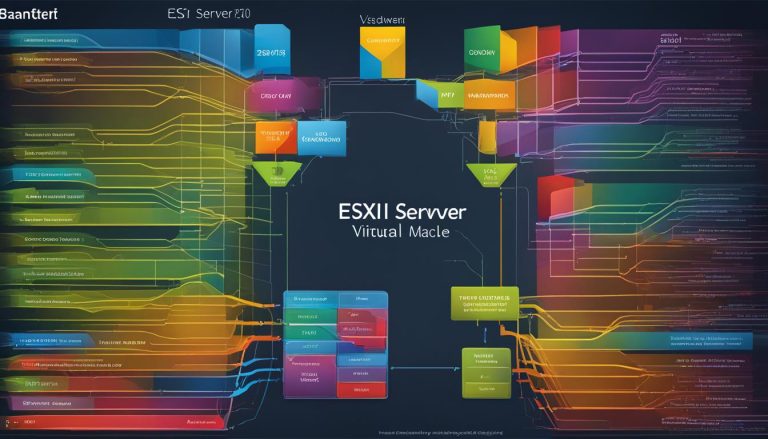Scrum is a project management framework that plays a crucial role in achieving success in software development and other industries. It revolves around transparency, reflection, and adaptation, enabling teams to respond quickly to changing requirements while maintaining quality. The Scrum framework consists of a set of principles and values that foster effective teamwork, clear communication, and collaboration.
Key Takeaways:
- Scrum is a project management framework that emphasizes transparency, reflection, and adaptation.
- The Scrum framework consists of three key pillars: transparency, reflection, and adaptation.
- Scrum teams follow five core values: commitment, courage, focus, openness, and respect.
- Scrum works by organizing work into time-boxed periods called Sprints.
- Scrum relies on clear roles, such as the Product Owner, Scrum Master, and Development Team, to drive the project forward.
How Does Scrum Work?
Scrum is an Agile project management framework that enables teams to collaborate effectively and deliver valuable products. At the heart of Scrum is the concept of Sprints, which are time-boxed periods where the team works on a specific set of tasks. During each Sprint, the Scrum team follows a series of ceremonies or events that ensure transparency, collaboration, and progress.
One of the key ceremonies in Scrum is the Sprint Planning meeting, where the team defines the scope of work for the upcoming Sprint. It involves selecting items from the Product Backlog, a dynamic list of features and requirements, and creating the Sprint Backlog that contains the tasks to be completed in the Sprint.
The Daily Scrum is a short daily meeting where the team synchronizes their work and plans for the day. It helps to identify any impediments or challenges and allows for quick adjustments. At the end of the Sprint, the team holds a Sprint Review meeting to showcase the completed work to stakeholders and gather feedback. The Sprint Retrospective is a reflective meeting where the team discusses what went well, what could be improved, and identifies action items for the next Sprint.
With Scrum, roles play a crucial part in driving the project forward. The Product Owner is responsible for prioritizing the Product Backlog and ensuring the team delivers value to the business. The Scrum Master is the facilitator and coach, helping the team follow Scrum processes effectively. The Development Team consists of individuals with different skills who collaborate to deliver the product increment.
Scrum artifacts, such as the Product Backlog, Sprint Backlog, and Increment, provide essential information to the team throughout the project. The Product Backlog is a dynamic list of features and requirements that is constantly reviewed and reprioritized. The Sprint Backlog contains the tasks selected for the current Sprint, while the Increment represents a usable end product that adds value to the project.
In summary, Scrum works by enabling teams to work in short iterations called Sprints, following a set of ceremonies and leveraging clear roles and artifacts. It promotes collaboration, adaptability, and continuous improvement, allowing teams to deliver high-quality products.
What are Scrum artifacts?
Scrum artifacts are essential elements that Scrum teams utilize to manage their projects and resolve issues. These artifacts provide structure and guidance throughout the project lifecycle, aiding in effective collaboration and successful project delivery. The three primary Scrum artifacts are the Product Backlog, Sprint Backlog, and Increment.
1. Product Backlog
The Product Backlog is a dynamic and prioritized list of features, requirements, and enhancements that need to be completed for the project’s success. It serves as the team’s comprehensive to-do list and is continually reviewed and adjusted based on changing market conditions and stakeholder feedback. The Product Backlog ensures that the team is always working on the most valuable items first, maximizing the project’s impact.
2. Sprint Backlog
The Sprint Backlog is a subset of items from the Product Backlog selected by the Scrum team to be completed within the current Sprint. It details the work that needs to be accomplished during the Sprint, including specific tasks and associated estimates. The Sprint Backlog evolves throughout the Sprint as new insights emerge and priorities shift. This artifact enables the team to focus on achieving their Sprint goal and provides transparency into the work being done.
3. Increment
The Increment is the tangible outcome of a Sprint. It represents a usable end product that the Scrum team delivers at the end of each Sprint. The Increment may include new features, enhancements, or bug fixes, and it contributes to the overall project goal. By delivering a potentially releasable Increment at the end of each Sprint, the team demonstrates progress and value to stakeholders, fostering trust and confidence in the project’s success.
These Scrum artifacts play a crucial role in ensuring the team’s focus, transparency, and adaptability throughout the project. By effectively utilizing the Product Backlog, Sprint Backlog, and Increment, Scrum teams can stay organized, prioritize work, and deliver incremental value, ultimately leading to successful project outcomes.
Table: Comparison of Scrum Artifacts
| Artifact | Purpose | Main Users |
|---|---|---|
| Product Backlog | Lists the features, requirements, and enhancements for project success. | Product Owner, Scrum Team, Stakeholders |
| Sprint Backlog | Specifies the work to be completed within the current Sprint. | Scrum Team, Scrum Master |
| Increment | Delivers a usable end product at the end of each Sprint. | Scrum Team, Stakeholders |
Scrum Roles: Product Owner, Scrum Master, and Development Team
In Scrum, the success of a project depends on the effective collaboration and contributions of three key roles: the Product Owner, Scrum Master, and Development Team. Each role plays a unique part in driving the project forward and ensuring its successful completion.
Product Owner
The Product Owner acts as the bridge between the business and the development team. Their primary responsibility is to prioritize and manage the Product Backlog, a dynamic list of features and requirements. By making informed decisions on what features to deliver next, the Product Owner ensures that the team delivers value to the business. Their constant interaction with stakeholders and customers helps to define and refine the project’s vision, ensuring that it aligns with the needs of the end-users. The Product Owner’s role is crucial in keeping the team focused on delivering a product that meets the customer’s expectations.
Scrum Master
The Scrum Master is the advocate for Scrum within the team and ensures that the team strictly follows Scrum processes. They facilitate meetings and events such as the Sprint Planning, Daily Scrum, Sprint Review, and Sprint Retrospective, ensuring that they are conducted effectively. The Scrum Master’s role is not that of a traditional project manager but rather that of a servant-leader, coaching and guiding the team to enable self-organization and continuous improvement. They remove any obstacles that may hinder the team’s progress and help create an environment where the team can thrive and deliver their best work.
Development Team
The Development Team consists of individuals with different skills and expertise who work collaboratively to deliver the product increment. They are self-organizing and responsible for planning and estimating the work that needs to be done in each Sprint. The Development Team embodies the core values of Scrum, including commitment, focus, and openness. They work together to turn the items in the Product Backlog into a potentially releasable Increment. Each member of the Development Team brings their unique skills and perspectives, contributing to the overall success of the project.
| Role | Responsibilities |
|---|---|
| Product Owner | Prioritizing and managing the Product Backlog, defining project vision, collaborating with stakeholders |
| Scrum Master | Facilitating Scrum events, coaching and guiding the team, removing obstacles |
| Development Team | Planning and estimating work, self-organizing, delivering the product increment |
The collaboration between the Product Owner, Scrum Master, and Development Team is essential for the successful implementation of Scrum. Each role brings their unique strengths and perspectives, contributing to the overall success of the project. By embracing the principles of Scrum and leveraging the strengths of each role, organizations can effectively manage projects, deliver value to the business, and achieve better outcomes.
Conclusion
Scrum plays a crucial role in the world of software development and other industries. Its importance lies in its ability to enable teams to adapt quickly to changing requirements while ensuring high quality and maximizing return on investment. The iterative and incremental nature of Scrum fosters a culture of continuous improvement and learning, resulting in timely project delivery within budget constraints.
One of the key benefits of Scrum is that it provides a framework for effective teamwork, clear communication, and collaboration. By embracing Scrum, organizations can optimize their processes and drive innovation, leading to better project outcomes and customer satisfaction.
When it comes to software development specifically, Scrum allows teams to respond promptly to evolving customer needs and market demands. It enables them to deliver value incrementally throughout the project, providing regular opportunities for feedback and adjustment. This iterative approach ensures that the final product meets the customer’s expectations and delivers real value to the business.
In conclusion, Scrum offers a powerful methodology for managing projects in a dynamic and fast-paced environment. Its importance and benefits in software development and beyond cannot be overstated. By adopting Scrum, organizations can unlock the full potential of their teams, optimize their processes, and achieve success in an ever-changing landscape.
FAQ
What is Scrum?
Scrum is a project management framework that emphasizes transparency, reflection, and adaptation.
What are the key pillars of the Scrum framework?
The key pillars of the Scrum framework are transparency, reflection, and adaptation.
How does Scrum work?
Scrum works by organizing work into time-boxed periods called Sprints, where a cross-functional team collaborates to deliver a valuable product increment.
What are Scrum artifacts?
Scrum artifacts are tools that Scrum teams use to manage projects and solve problems, including the Product Backlog, Sprint Backlog, and Increment.
What are the roles in Scrum?
The roles in Scrum include the Product Owner, Scrum Master, and Development Team.
Why is Scrum important?
Scrum is important because it allows teams to respond quickly to changing requirements while maintaining quality and increasing return on investment.
Janina is a senior specialist in information technology


